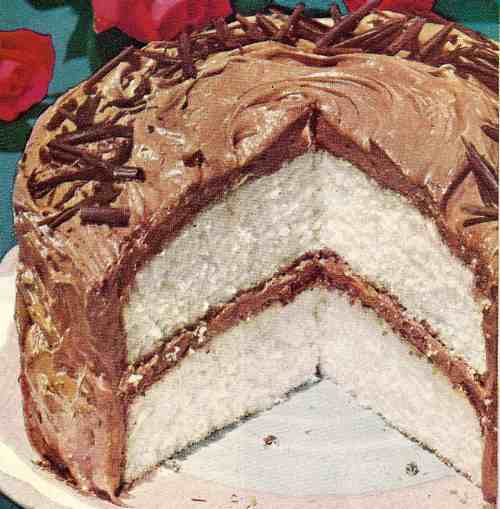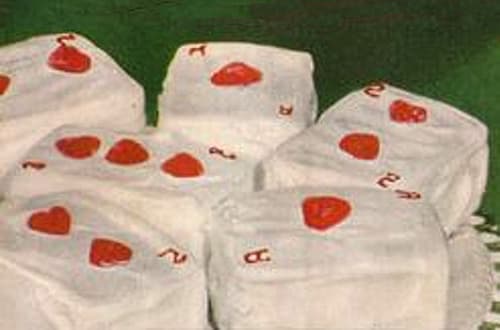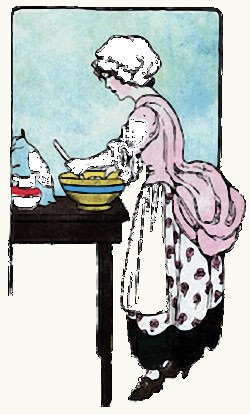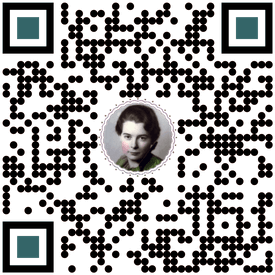Timeless Old Fashioned White Cake Recipes
There's a special kind of magic in classic Old Fashioned White Cake Recipes, a magic that transports us back to a time of handwritten recipe cards and the comforting aroma of baking wafting from Grandma's kitchen. These cakes are more than just dessert; they are edible history.
Born in an era of newfound refinement during the 19th century, the white cake became a symbol of elegance and celebration, gracing the tables of weddings and the most special occasions. Its delicate, snowy crumb and versatile nature make it the perfect canvas for any flavor of frosting or filling you can imagine.
This cherished collection gathers heirloom recipes from the late 1800s and early 1900s, each with its own story and subtle charm. From a simple, feather-light cake to a rich, multi-layered masterpiece, you'll find a recipe here to make any day feel like a celebration. Let's open Grandma's recipe box and bake a piece of the past.
Mom's Old Fashioned White Cake Recipes
Mom's Recipe Scrapbooks (c. 1920s)
 White Layer Cake Decorated with Chocolate Icing
White Layer Cake Decorated with Chocolate Icing(PD Source: Adapted from Magazine Clipping)
Classic White Layer Cake
This is the quintessential celebration cake, straight from a lovingly kept 1920s scrapbook. Its reliable, fluffy texture makes it a perfect base for birthday parties or anniversaries. For a truly classic pairing as shown in the vintage photo, finish it with a rich, dark chocolate frosting to create a stunning and delicious contrast.
2 cups sifted cake flour
2 teaspoons baking powder
1/2 cup butter, or shortening
1 cup sifted sugar
2/3 cup milk
1 teaspoon vanilla
3 egg whites, stiffly beaten
Directions:
Prepare pan. Sift flour once, measure, add baking powder, and sift together three times. Cream shortening thoroughly, add sugar gradually, and cream together until light and fluffy. Add flour, alternately, with milk, a small amount at a time. Beat after each addition until smooth. Add vanilla; fold in egg whites.
Bake in two greased 9-inch layer pans in a moderate oven (375°F) for 25 to 30 minutes; or in single greased 8x8x2-inch pan, in moderate oven (350°F) for 1 hour.
Double recipe to make three 10-inch layers for a triple layer cake. Frost with your favorite frosting.
Old Fashioned White Feather Cake
Just as the name implies, this cake is exceptionally light and airy, with a delicate, feather-like crumb. The recipe calls for a "scant cup" of sugar, an old-fashioned term you'll find explained in our baking guide below. This version is simple, elegant, and simply melts in your mouth.
1 scant cup sugar, 1/4 cup butter, 1/2 cup milk, 1-1/2 cups flour, whites of 2 eggs, 2 teaspoons baking powder, a little vanilla; cream butter and add gradually the sugar, then milk, flour, and baking powder; last the beaten whites of the eggs and vanilla. Bake in moderate oven (350°F) until done.
Farmhouse-Style Old Fashioned White Cake Recipes
Mary at the Farm and Book of Recipes (1915)
Good and Cheap Farmhouse White Cake
This recipe from "Mary at the Farm" is a wonderful example of farmhouse frugality and ingenuity. The inclusion of lard alongside butter was a common practice to stretch costly ingredients while creating an incredibly tender and moist cake. Don't miss the helpful tip to save the leftover egg yolks for another use!
2 cups granulated sugar
1/2 cup butter and lard, mixed
1 cup milk
Add a few drops of almond flavoring
3 cups flour
2 teaspoonfuls baking powder
Whites of five eggs
Cream together the butter and sugar, add flour sifted with baking powder alternately with the stiffly beaten whites of eggs. The five yolks of eggs left from baking white cake may be used when making other recipes. (Bake in a moderate oven (350°F) until done).
Delicate Traditional White Cake
This recipe comes with a friendly warning that it can be "a little difficult to get just right," making it a rewarding challenge for a dedicated baker. The unique method of scalding the milk results in a fine, flaky texture reminiscent of an angel food cake. Follow the directions closely for a truly delicious and impressive result.
Sift together, three times, the following:
1 cup of flour
1 cup of sugar (granulated)
3 even teaspoonfuls of baking powder
Scald one cup of milk and pour hot over the above mixture. Beat well. Fold into the mixture, carefully, the stiffly beaten whites of 2 eggs. Flavor with a few drops of almond extract. Bake in a moderate oven (350°F), exactly as you would bake an angel cake.
This is a delicious, light, flaky cake, if directions are closely followed, but sometimes a little difficult to get just right. Double ingredients for layer cake.
Old Fashioned White Cake Recipe
The Settlement Cook Book (1903)
The Settlement Easy White Cake
"The Settlement Cook Book" was known for its reliable and accessible recipes, and this one is no exception. True to its name, this is a wonderfully easy white cake that delivers a tender, moist crumb every time. The final step of "cutting in" the stiffly beaten egg whites is key to its light texture.
1/2 cup butter
1 cup sugar
2 cups flour
4 teaspoons baking powder
1/2 cup milk
1/2 teaspoon almond flavoring
Whites of 4 eggs
Mix and sift baking powder and flour. Cream the butter, add the sugar gradually. Add the flour and milk alternately, then the flavoring, and lastly cut in the whites of the eggs, beaten until stiff. Bake in a moderate oven (350°F).
The Alpha Phi Fraternity's Old Fashioned White Cake Recipes
The Eta Cook Book (1914)
Simple White Cake With Almond
Contributed by member Eloise H. Crocker, this recipe uses a generous six egg whites, which promises an exceptionally airy and voluminous cake. The classic almond flavoring provides a delicate, sweet-nutty aroma that was very popular in cakes of this era.
Two cups sugar, one cup butter, whites six eggs, one cup milk, three cups flour, one teaspoon Royal baking powder. Flavor with almond. Bake in a moderate oven (350°F).—Eloise H. Crocker
Western White Cake With Lemon
This lovely variation from Grace D. Runyon offers a bright, zesty twist on the old fashioned white cake recipe. The use of lemon flavor provides a refreshing tang that beautifully cuts through the sweetness, making it a perfect cake for a spring or summer gathering.
Cream one and one-half cups sugar and one-half cup butter, one-half cup milk, two cups flour, one heaping teaspoon Royal baking powder, whites of six eggs beaten dry. Flavor with lemon. Bake in a moderate oven (350°F). —Grace D. Runyon
Grandma's White Cake Success Tips
Baking these old fashioned recipes can sometimes feel like translating a different language. These secrets will help you navigate the terms and techniques of a bygone era to ensure your white cake turns out perfectly every time.
- Scant Cup: This simply means a little less than a full, level cup. To measure, fill your measuring cup and then remove about a tablespoon.
- The Importance of Room Temperature: For the lightest, fluffiest cake, always use butter, eggs, and milk that are at room temperature. Cold ingredients don't combine as smoothly, which can lead to a dense cake.
- Why Sifting Matters: Old-fashioned flour was much heavier and coarser than today's. Sifting was essential to lighten it and ensure accurate measurement. While modern flour is lighter, sifting still helps aerate the flour and baking powder, leading to a more tender crumb.
- Grandma's Secret to a Fluffy White Cake: Folding! When a recipe says to "fold in" the beaten egg whites, use a gentle touch. Use a spatula to cut down through the middle of the batter, scrape along the bottom, and bring the batter up and over the top. This technique preserves the air you worked so hard to beat into the egg whites, which is the key to a light texture. Vigorous stirring will deflate them and make your cake tough.
Answers to Common Problems
Why Is My White Cake Dry?
Why Is My White Cake Dry?
It was likely baked for too long. Ovens can vary, so start checking for doneness a few minutes before the recipe calls for. A cake is done when a wooden toothpick inserted into the center comes out clean.
My Did My Cake Sink in the Middle?
My Did My Cake Sink in the Middle?
This can happen if the oven door was opened too early, causing a sudden temperature drop, or if the cake was under baked. It can also be caused by over-beating the batter after the flour is added.
Why Is My White Cake Tough or Dense?
Why Is My White Cake Tough or Dense?
The culprit is usually over mixing the flour. Once you start adding the flour, mix only until the ingredients are just combined. Over mixing develops the gluten in the flour, resulting in a tough, rubbery texture instead of a tender one.
A Creative Serving Suggestion: White Card Party Cakes
 Individual Card Cakes
Individual Card Cakes(Source: Unknown Magazine Clipping)
Turn any white cake into a show-stopping dessert that looks as though it came from a professional caterer! This idea is perfect for card parties, a casino-themed night, or an "Alice in Wonderland" birthday.
Simply bake your favorite white cake from this collection in a 13x9x2-inch pan and let it cool completely. Cut the cake into neat rectangles, frost them with white icing, and then decorate with candy hearts and numerals of piped red icing to create the look of playing cards.
The Elegant History of White Cake
Compared to other homemade dessert cakes that enjoy a long history, white cakes only came into being during Queen Victoria's reign. The secret to achieving the best results from an old fashioned white cake recipe has always been to use the finest white flour and other ingredients.
Improvements in refining methods meant that white flour and white sugar had become commonly available by the 1850s, making it possible to have cakes with the lightest color and texture. However, the extra cost of the refined ingredients meant that white cakes were mostly made for special occasions by those who could afford them.
The whiteness of these dessert cakes came to symbolize purity, which accounted for their popularity at weddings, and their costlier ingredients reflected the prosperity of those serving them.
A Nursery Rhyme for a Special Cake

These fine white cakes were considered so special they were even immortalized in the children's nursery rhyme "Over the Water."
Over the Water
Over the water, and over the sea,
And over the water to Charley,
I'll have none of your nasty beef,
Nor I'll have none of your barley;
But I'll have some of your very best flour
To make a white cake for my Charley.

Sign Up now for GRANDMA'S DESSERT CLUB and download your FREE PDF COPY of Grandma McIlmoyle's Little Dessert Book. Also receive my regular Bulletin featuring classic recipes and nostalgia.




